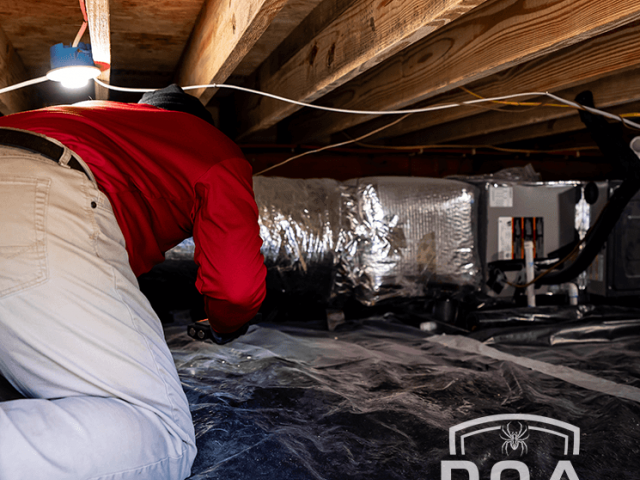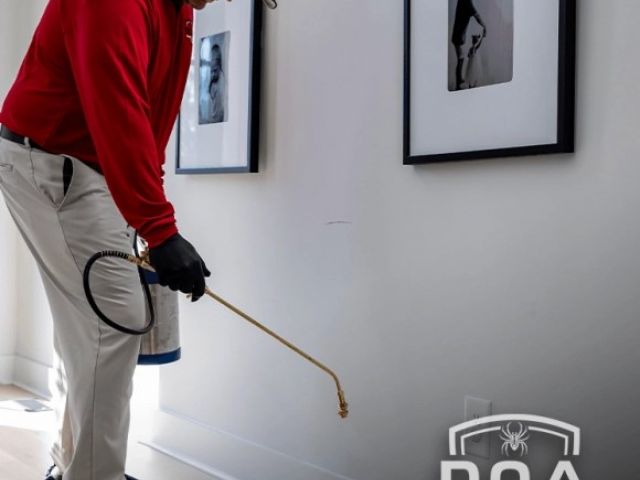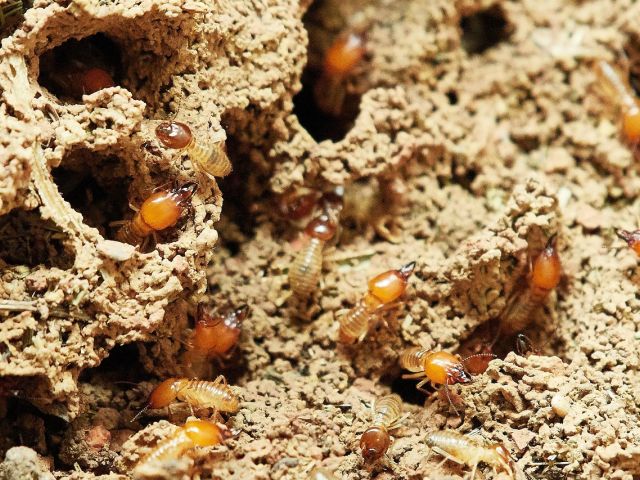Understanding How Mice Invade Your Home
Key Takeaways
– Mice enter homes through small gaps and openings around doors, windows, and utility pipes.
– Common attractions include food leftovers, clutter, and easily accessible nesting materials.
– Keeping your home clean and sealing potential entry points are effective prevention methods.
– Regular inspections and minor repairs can prevent mice from finding new entryways.
– Professional rodent control services offer comprehensive solutions for persistent infestations.
Mice are more than just unwelcome guests; they are experts at sneaking into places and disrupting your home’s peace. You might be curious about how these nimble creatures manage to get inside. Mice entry points can include poorly sealed foundations, openings around utility pipes, and gaps beneath doors. Often, what attracts mice to houses are the prospects of food and shelter, found in abundance in kitchens and pantries. Addressing potential entryways is essential. By understanding these points of entry, you can explore effective mice pest control strategies and mice home remedies to keep these rodents at bay. Keeping an eye out for mice infestation signs—such as droppings and gnaw marks—can also help in the battle against these determined intruders. Additionally, knowing where do mice hide, often in attics, walls, and basements, allows you to pinpoint problem areas. If your efforts fall short, rodent control services offer professional solutions. Educating yourself on how to seal mouse holes can prevent the issue from worsening, ensuring your home remains mouse-free.
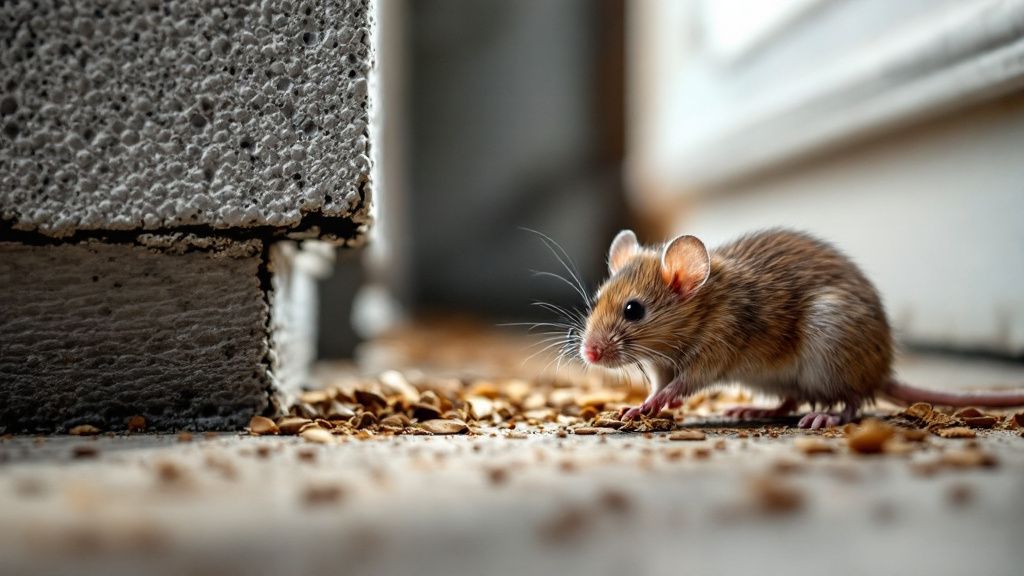
Common Entry Points for Mice
Mice are small yet crafty, finding their way into homes through surprisingly small openings. Gaps around utility pipes are a frequent entryway, as mice can squeeze through tiny holes. Cracks in your foundation and poorly sealed windows or doors also present clear opportunities for their intrusion. Such vulnerabilities make it essential to routinely inspect and fortify these areas against unexpected guests.
Garage doors and vents provide more unnoticed entry points for these persistent invaders. Loose vents or improperly sealed garage doors can offer easy access for mice. Regularly checking these spots and making necessary repairs can dramatically reduce their chances of entering. Additionally, keeping garage areas tidy and free from clutter discourages mice from settling in.
Perhaps unexpectedly, even your roofline and attic can invite these rodents. Overhanging trees or branches near the house can act as bridges for mice, leading them straight to your roof. Ensuring that tree limbs are kept well-trimmed and securing any potential openings in the attic are practical measures to prevent them from making a home above your head.
To minimize entry risk, consider examining all potential mice entry points and applying practical solutions. Sealing gaps and openings promptly and maintaining regular inspections will help you stay ahead of any potential mice infestation signs, keeping your home secure from unwanted visitors.
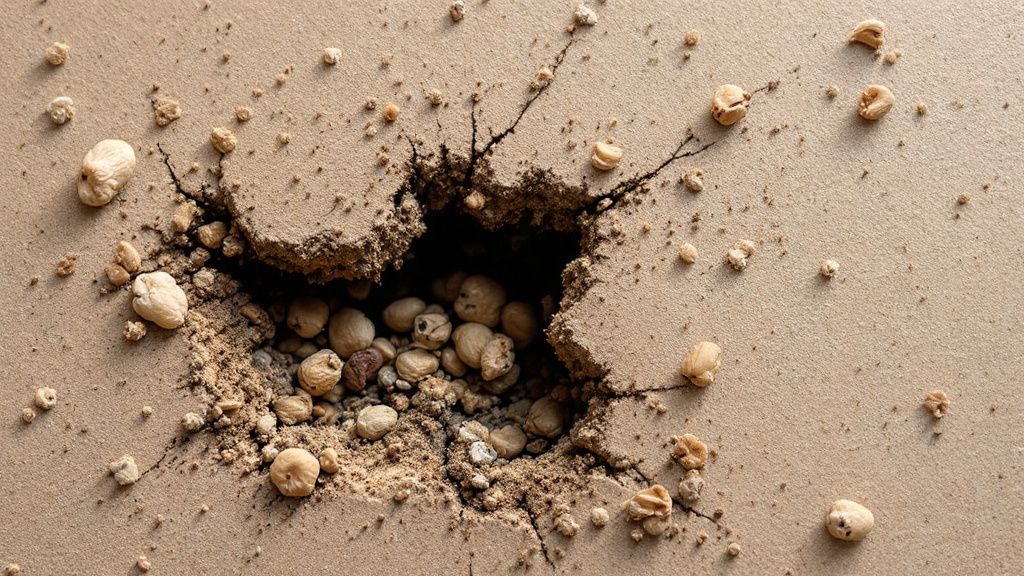
Signs of a Mouse Infestation
Identifying mice infestation signs early can save you from bigger headaches down the road. Droppings are often the most recognizable indicator, typically found in kitchen drawers, cupboards, and along baseboards. Mice also leave gnaw marks on furniture or baseboards, as their teeth grow continuously and need constant gnawing to keep them trimmed. Hearing scratching or scampering sounds at night can further confirm their presence.
The nests of these little invaders are another telltale sign. Mice build their homes with shredded paper, fabric, and other soft materials. These nests are usually found in secluded spaces, such as behind appliances, in basements, or within wall voids. Knowing where do mice hide helps pinpoint these hidden nesting spots. Additionally, noticing grease marks along walls is a clue, as mice use the same paths repeatedly.
Did you know? Statistics reveal that up to 25% of homeowners experience rodent problems, underscoring the prevalence of this issue. Mouse tracks, often accompanied by a musky odor, can signal an active infestation requiring immediate attention. Keeping an eye out for these trails and utilizing proactive measures are crucial steps in tackling the problem.
Early intervention strategies, such as mice pest control or implementing mice home remedies, can keep the situation from escalating. If these measures prove ineffective, consulting rodent control services may become necessary to ensure comprehensive protection. Identifying mice entry points and addressing them can also prevent future intrusions, maintaining your home as a safe and comfortable refuge.

Why Mice Choose Your Home
Your home’s appeal to mice often boils down to abundant food sources and comfortable shelter. Crumbs left on countertops, easily accessible trash cans, and even pet food can lure these little critters indoors. Warm attics, basements, and crawl spaces become especially attractive when the weather outside turns colder, offering mice the coziness they need to thrive.
While many believe that keeping a clean home is enough to prevent infestations, there’s a strong case for vigilance around structural integrity as well. Tiny cracks, unprotected vents, and gaps in doors can serve as open invitations. Regularly inspecting for these vulnerabilities allows for early intervention and significantly reduces the risk of mice discovering a new home in your residence.
Mice are opportunistic creatures, seeking out environments that fulfill their basic needs. What attracts mice to houses often includes readily available nesting materials and areas that provide concealment from predators. Items like piles of newspapers, cardboard boxes, and cluttered attics or garages provide both nesting materials and safe hiding spots for these rodents, encouraging them to stay longer.
Exploration of effective proactive measures, such as learning how to seal mouse holes and identifying potential mice entry points, will deter these visitors. Implementing simple yet effective mice pest control practices combined with preventive strategies can maintain a rodent-free home. For persistent issues, rodent control services provide professional interventions tailored to your specific needs.
Preventing Mice from Entering Your Home
Preventing mice from entering your home starts with identifying and addressing common entry points. Regularly inspecting areas around doors, window frames, and foundations is crucial. A small hole or crack, no bigger than a dime, can become a doorway for these tiny invaders. Ensuring that you address these vulnerabilities promptly by sealing them up protects your home from potential intrusions.
Keeping your home clean and free of food remnants is vital. Mice are drawn to leftovers, crumbs, and open food containers. For example, a well-sealed kitchen with no accessible food sources can do wonders in keeping mice at bay. This simple strategy minimizes what attracts mice to houses, reducing their incentive to venture inside and explore further.
Effective habitat management plays a significant role in preventing infestations. Remove piles of debris, wood stacks, or overgrown vegetation near the house, as these can serve as attractive hiding spots. Creating a clear, perimeter around the house deters mice from settling near potential entry points, reducing the chance of them finding a way inside.
While traps and baits offer some measure of control, understanding how to seal mouse holes using steel wool or caulk can provide more reliable results. Regular inspection and maintenance of these seals reinforce your home’s defenses. Implementing these measures, along with mice pest control tactics, ensures a robust strategy against potential infestation.
If you face persistent challenges, engaging professional rodent control services can provide a more thorough solution tailored to your needs. These experts can help pinpoint where do mice hide and address each situation comprehensively. With the right approach, you can effectively maintain a mice-free home and enjoy peace of mind.
Frequently Asked Questions
How do mice typically enter a house?
Mice can enter through tiny gaps and cracks around foundations, pipes, and doors.
What are some signs of a mouse infestation?
Common signs include droppings, gnaw marks, nests made of shredded materials, and scratching noises in walls.
What attracts mice to a home?
Mice are drawn to homes by the availability of food, warmth, and safe hiding places.
How can I prevent mice from entering my house?
Seal up potential entry points, keep food stored securely, and reduce clutter that could serve as nesting sites.
When should I call rodent control services?
If you notice persistent signs of mice despite your preventive measures, it’s advisable to call professional pest control services.



